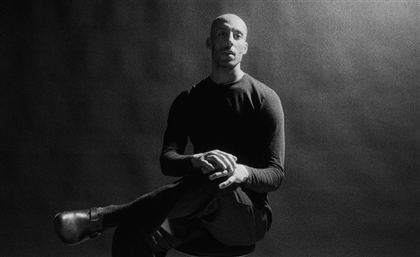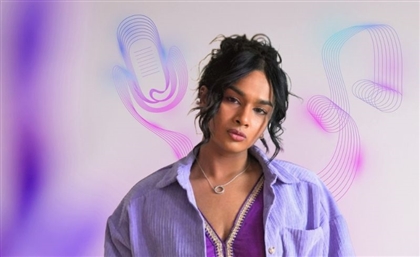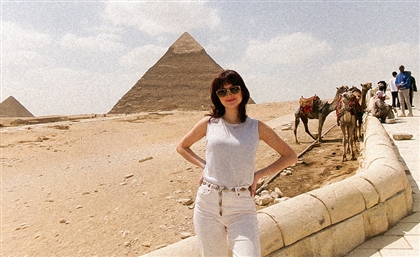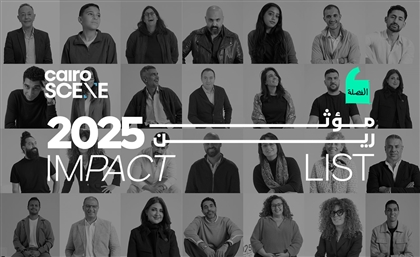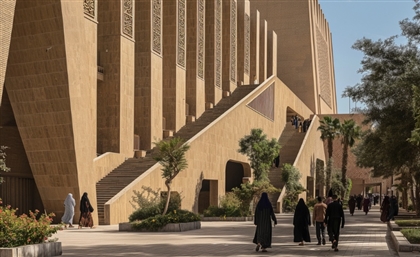'I'm Still Alive' - Artist Maisara Baroud Records History From Gaza
Created to communicate with loved ones outside of Gaza, this collection has become a symbol of Palestinian solidarity.

For years, Maisara Baroud has used his art to champion humanitarian causes. Now, so much of that work – along with his tools, studio and home – is gone, destroyed by Israeli warplanes on October 9th, 2023. For the last seven months, Baroud has continued creating, documenting the genocide unfolding around him in a series titled 'I'm Still Alive'.
“My art is an aesthetic scream that shows the humanity of those who are suffering, depicting the struggles of people all over the world, but in Palestine in particular,” Maisara Baroud tells CairoScene. “I am continuing this mission throughout the war.”
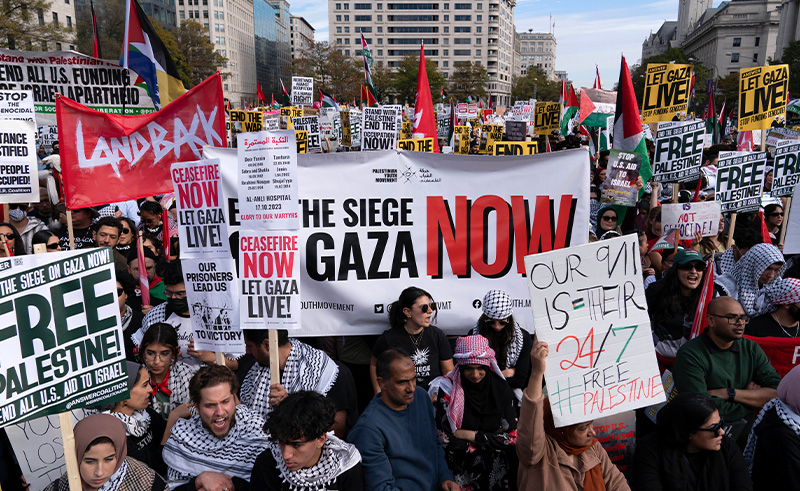 Every day that the limited communication channels in Gaza allow, Baroud publishes a new art piece to let his loved ones know he is alive. According to Baroud, this artistic practice has become his only outlet after days spent searching Rafah for the things he and his family need to survive.
Every day that the limited communication channels in Gaza allow, Baroud publishes a new art piece to let his loved ones know he is alive. According to Baroud, this artistic practice has become his only outlet after days spent searching Rafah for the things he and his family need to survive.
After more than 200 days of bombardment, Baroud has created hundreds of drawings. They are made with ink on 21x30cm paper, simple materials that are nonetheless difficult to find in the middle of the war. The stark black and white images immortalise the horrors Baroud and around two million Gazans are living through. Geometric bodies twist through space that is punctuated by jagged city landscapes and monstrous tanks. Their angular limbs wrap around each other, contorted into impossible positions. The figures’ eyes are closed, conveying a sense of dignity. Their mouths are sometimes opened in anguish, and at other times resolutely shut.
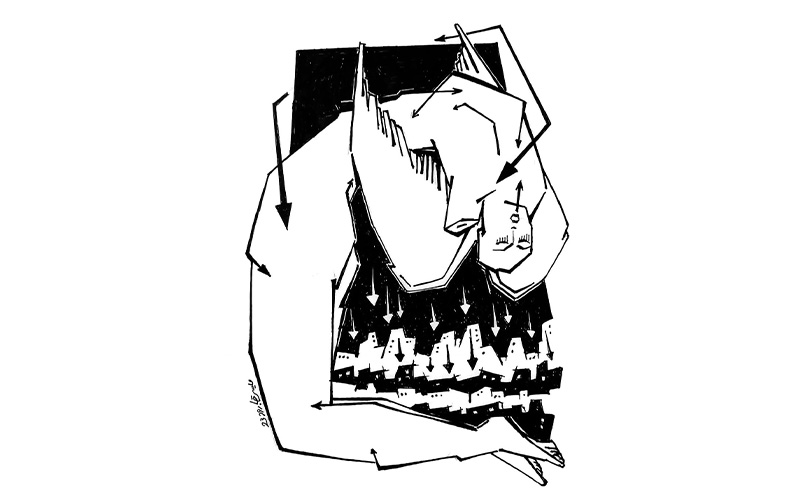 The pieces convey both frantic motion and stifling confinement. Swathes of black and white break up the already limited space, closing in around people who mourn and shelter one another. Arrows cut across the pages, pointing in contradictory directions.
The pieces convey both frantic motion and stifling confinement. Swathes of black and white break up the already limited space, closing in around people who mourn and shelter one another. Arrows cut across the pages, pointing in contradictory directions.
“The arrows refer to the compass of the self, which is scattered by emergency situations that are impossible to endure,” Baroud says. “They refer to attempts to escape this situation. They are guides for those who are searching for a way to survive the ongoing slaughter.”
Baroud’s images are deeply political as well as personal. In some, he calls attention to international complicity with bags marked 'UN', ‘Food Pack’, and 'Aid' scattered through scenes of violence. Sometimes these containers are filled with severed limbs, at other times they are shown falling into the sea. In other pieces, Baroud mourns the life he lost. In a series of four images, Baroud remembers his family’s house cat and pet bird who were lost with the destruction of their home. Taken individually or together, Baroud’s artwork tells a story of international failure, collective hardship, personal loss, and continued survival.
“Palestinian art has the responsibility to spread our stories and expose the occupation’s attempts to obliterate their existence,” Baroud states. “Art is better able to express the Palestinian essence than political figures or official narratives.”
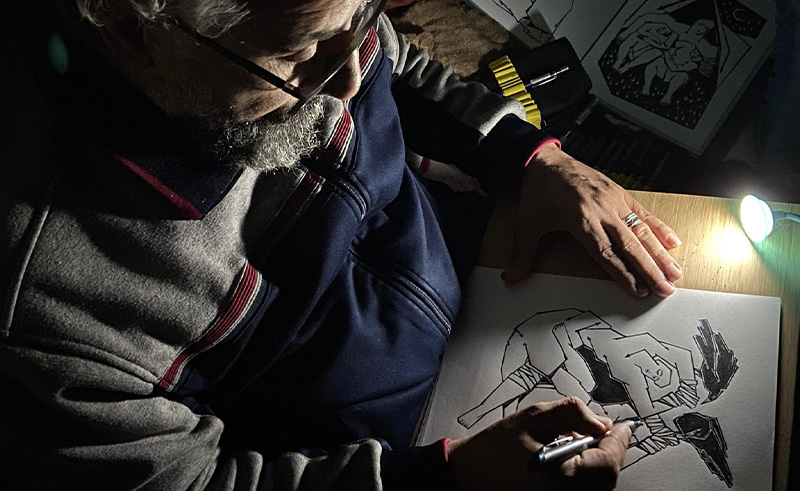 The pages of Baroud’s sketchbook have been seen far beyond Gaza’s borders. They tell not only a story of suffering, but also of solidarity, and of a borderless movement for Palestinian freedom. Baroud put together this collection of work to communicate with his friends and family – now, his friends are sharing his work with the world.
The pages of Baroud’s sketchbook have been seen far beyond Gaza’s borders. They tell not only a story of suffering, but also of solidarity, and of a borderless movement for Palestinian freedom. Baroud put together this collection of work to communicate with his friends and family – now, his friends are sharing his work with the world.
At the Zawyeh Gallery in Ramallah, Baroud’s longtime friend and colleague, Mohammad Sabaaneh, has recruited a team of artists who are recreating Baroud’s work as murals on the gallery’s walls. The two artists worked at the Arab American University in the West Bank together until Maisara moved back to his family home in Gaza. In the 20 years since, Israeli blockades and restrictions have prevented the two men from seeing each other.
“This exhibition is a message for Maisara, for all the artists in Gaza, for all the people in Gaza that we will do whatever we can to declare our solidarity for all of these people,” Sabaaneh tells CairoScene.
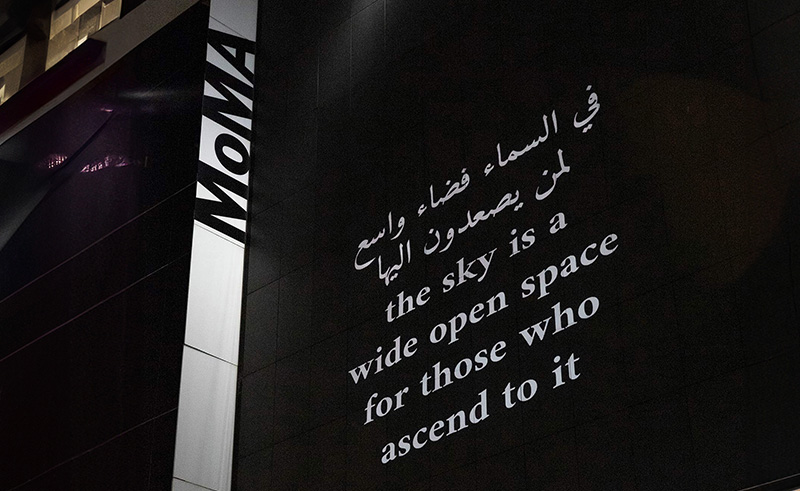 For Sabaaneh, recreating Baroud’s work was not easy. Doing so brought him and his team of artists closer to the genocide that, along with the increasing violence in the West Bank, was already impossible to ignore. The artists participating in this project had put themselves in Baroud’s frame of mind to recreate his work, ignoring their own artistic styles and histories.
For Sabaaneh, recreating Baroud’s work was not easy. Doing so brought him and his team of artists closer to the genocide that, along with the increasing violence in the West Bank, was already impossible to ignore. The artists participating in this project had put themselves in Baroud’s frame of mind to recreate his work, ignoring their own artistic styles and histories.
“It’s not easy, and it’s not just an artistic experience. It’s more of a human experience. You need to feel exactly what he’s feeling, to act as he’s reacting,” Sabaaneh says. “Sometimes you think that you are there in Gaza.”
For Sabaaneh, this collection is a powerful tool for dismantling the dehumanising rhetoric that has been at the centre of Zionist violence for years. He sees his former colleague’s work as a reminder to the world that the people in Gaza are artists, intellectuals, and, above all, human beings who are demanding their rights. Therefore, the purpose of the exhibit is not only to shine a light on the atrocities happening in Gaza, but to also show how skillfully Maisara Baroud is able to capture and communicate his experiences.
“During this war, Israeli leaders have said that they are fighting against human animals. This is how they want to dehumanise us as a Palestinian people,” Sabaaneh says. “The art that comes from Gaza is how we will dismantle their propaganda.”
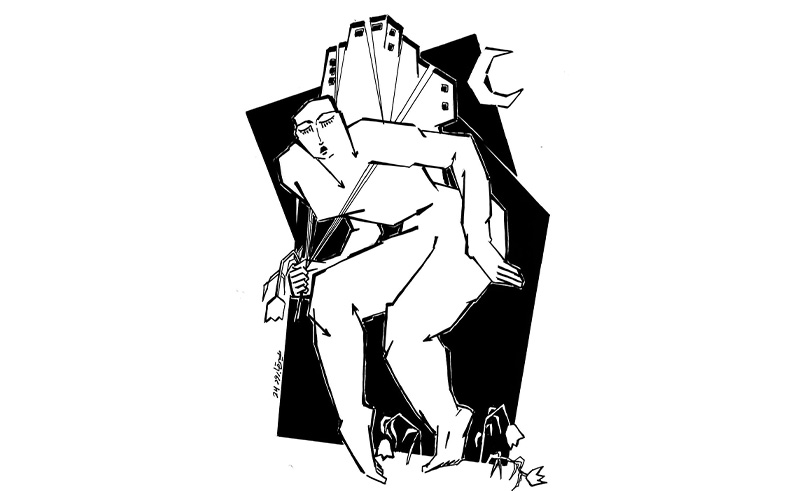 When he saw Baroud’s work, Sabaaneh instantly thought of Picasso’s ‘Guernica’, one of the most famous anti-war murals in history. Inspired by the Italian and German forces’s destruction of a city during the Spanish Civil War at the request of Franco, the painting’s surrealist style is in many ways similar to Baroud’s latest collection, utilising sharp angles, muted colours, and powerful imagery to convey the horrors of a massacre. Although 'Guernica' was not initially well-received, Picasso’s status propelled the painting into the public discourse. Palestinian artists, in contrast, have long faced difficulties when communicating about their struggles.
When he saw Baroud’s work, Sabaaneh instantly thought of Picasso’s ‘Guernica’, one of the most famous anti-war murals in history. Inspired by the Italian and German forces’s destruction of a city during the Spanish Civil War at the request of Franco, the painting’s surrealist style is in many ways similar to Baroud’s latest collection, utilising sharp angles, muted colours, and powerful imagery to convey the horrors of a massacre. Although 'Guernica' was not initially well-received, Picasso’s status propelled the painting into the public discourse. Palestinian artists, in contrast, have long faced difficulties when communicating about their struggles.
“It’s not easy to talk about Palestine through visual art,” Sabaaneh says. “You face censorship and attacks from both individuals and governments.” The cartoonist has experienced not only professional difficulties for his outspokenness against Israel, but has also had his work confiscated and even, in a 2019 exhibition at the International Criminal Court, stolen. Sabaaneh was able to rattle off a list of other artists who have been punished for creating art that champions Palestinian causes, including the Jewish cartoonist Avi Katz, who was fired for a cartoon criticising the Israeli government that was labelled anti-Semetic. Nevertheless, art continues to take a central role in the fight for Palestinian freedom – and, according to Maisara Baroud, this is becoming more and more true.
“There has been a cultural and arts movement since October 7th that feels like a revolution,” Baroud says. “It carries energy that is reminiscent of the Palestinian freedom movement in the second half of the 20th century.”
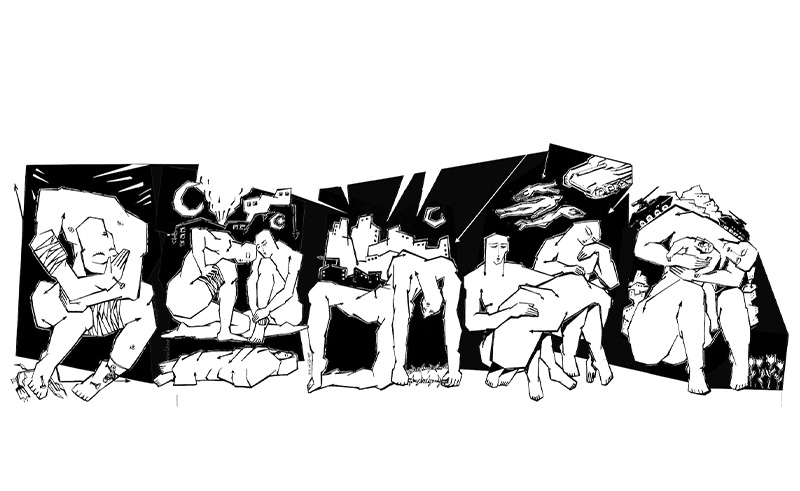 This movement is carrying Baroud’s work around the world. His drawings have become a powerful symbol of resistance, a testament to the international Palestinian solidarity movement’s ability to transcend borders. The stark, black and white images of this collection have appeared not only in Zawyeh Gallery, but also in New York, where they were projected onto the Museum of Modern Art in protest of the institution’s complicity with Palestinian oppression. Like the exhibit in Zawyeh, this protest happened organically, born out of a small group of Palestinian activists who knew Baroud and planned to use his work in small activities. Their efforts became larger and more public, culminating in a protest in which hundreds of demonstrators occupied the museum, shutting it down.
This movement is carrying Baroud’s work around the world. His drawings have become a powerful symbol of resistance, a testament to the international Palestinian solidarity movement’s ability to transcend borders. The stark, black and white images of this collection have appeared not only in Zawyeh Gallery, but also in New York, where they were projected onto the Museum of Modern Art in protest of the institution’s complicity with Palestinian oppression. Like the exhibit in Zawyeh, this protest happened organically, born out of a small group of Palestinian activists who knew Baroud and planned to use his work in small activities. Their efforts became larger and more public, culminating in a protest in which hundreds of demonstrators occupied the museum, shutting it down.
Images from Baroud’s 'I'm Still Alive' series are also being shown in Venice alongside, but not included in, the Venice Biennale, which rejected the exhibition. The images have been transferred onto transparent sheets of paper and are displayed on windows of Palazzo Mora as part of the 'Foreigners in Their Homeland' exhibit, which is organised by the Palestinian Museum US. Visible from the street, they will be seen by everyone who comes to visit the internationally acclaimed art show.
-ce1c4ad4-54d3-4263-9dde-bc5ff99c6981.jpg) These drawings have also been used across American and Canadian universities in protest of the genocide that is gripping Gaza. Baroud has been approached by others who are interested in publishing his work in books, and has been contacted by more individuals who hope to use his work in places like Germany and beyond. The resonance that his work has had all over the globe has given Baroud strength, pushing him to continue despite his circumstances.
These drawings have also been used across American and Canadian universities in protest of the genocide that is gripping Gaza. Baroud has been approached by others who are interested in publishing his work in books, and has been contacted by more individuals who hope to use his work in places like Germany and beyond. The resonance that his work has had all over the globe has given Baroud strength, pushing him to continue despite his circumstances.
“My message in these shows and exhibitions, whether it’s in Zawyeh Gallery, Venice or these protests, is that Gaza, despite its wounds, is still able to give,” Baroud shares. “Maybe the war machine has deformed the face of the city, but it can’t kill the idea. From the midst of death I can use my voice to challenge the siege, barriers, and borders.”
- Previous Article Italian-Palestinian Duo No Input Debuts Eponymous Electro EP
- Next Article Travel Across History on Egypt's Most Iconic Bridges
Trending This Week
-
Dec 27, 2025
-
Dec 23, 2025








